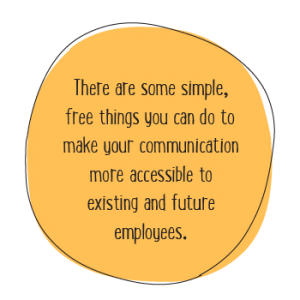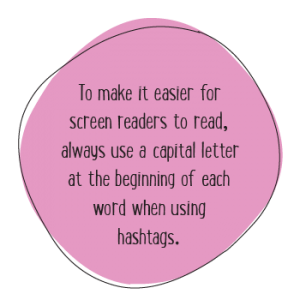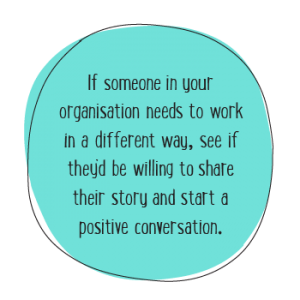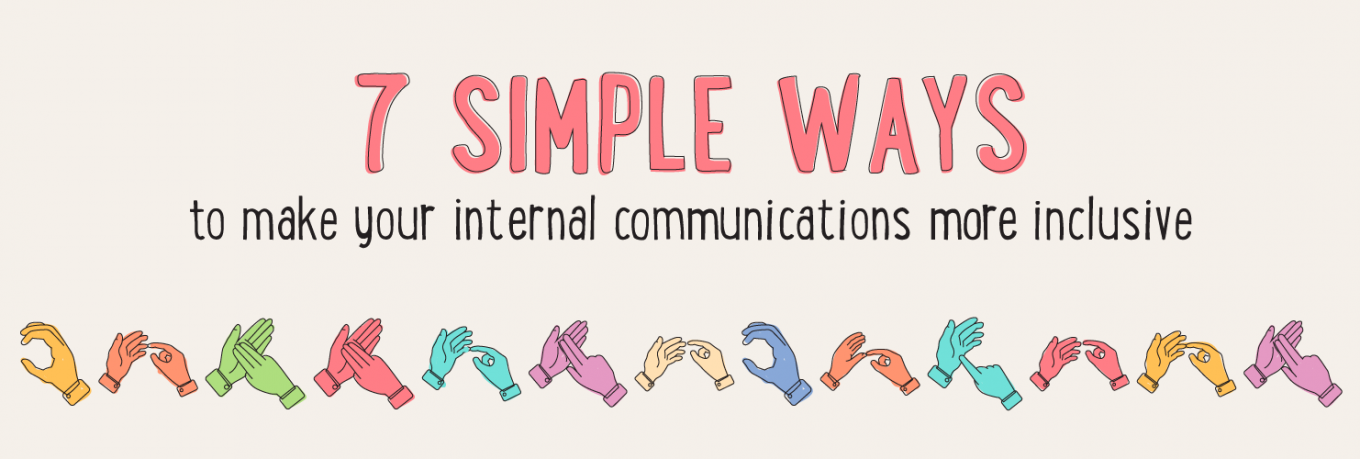As more and more organisations try to attract diverse talent, is it time we took a closer look at our internal communications and whether they’re accessible to all?
Earlier this year, the Royal National Institute for the Blind, tweeted about a setting on Twitter that describes images for the visually impaired. A brilliant idea, yet most people didn’t know it existed, and probably hadn’t considered it as an issue or something that was missing from their lives.
And how often do we do that internally? Chances are, IC practitioners will be aware if they have an employee with specific visual or hearing needs and will accommodate that. But if we’re to be truly inclusive organisations, that attract a diverse workforce, should it not form a part of everything we do, ensuring that future employees are able to access content we share inside our organisations?
Molly Haynes (pictured), is a content manager in the oil and gas industry and was born with severe hearing loss. She relies on hearing aids and lipreads to follow conversation. Molly’s professional life is conducted purely over email, text message and video Skype/Zoom calls. The organisation she works for has been hugely accommodating and she has also taken an active role in educating colleagues. It’s something she believes more organisations should do.
“I am incredibly impressed with the internal communications where I work. I have an internal comms director who is engaged and interested in finding out about me, my deafness and how to meet my needs and that’s made a world of difference.
“Having now worked in a company where the internal comms is so inclusive and accessible, it’s definitely something that would be important to me if I was looking to move companies. But the essence of it is that I don’t want to move companies. This one is inclusive, aware and encouraging without drawing negative attention to my disability. And while I know that in an ideal world it would be mandatory that companies were like this, I feel incredibly lucky to have discovered one that is.”
Molly makes a great point, in an ideal world, all companies would be as inclusive as the one she works for. However, we know budgets and resources are tight, so it’s not practical or always necessary to create your employee magazine in Braille or hire a sign language interpreter at your town hall if no one in your organisation requires it.
But there are some simple, free things you can do to make your internal communication more accessible to existing and future employees…
1. Put captions on intranet images
Adding a descriptive caption such as ‘The finance team celebrate their award win” makes it much easier for people using screen readers. It takes a few extra seconds to add that on and could make all the difference to an employee’s experience.
2. Include subtitles on your videos
Not only does this assist people who are hard of hearing, but many people may be watching videos where playing sound isn’t possible such as a canteen. In our personal lives, many of us now consume video without sound, thanks to subtitles – Facebook reported that 85% of their videos are played without sound. Think about how you consume video in your personal life – nearly all will have subtitles so it’s something your employees will be used to.
And for user generated content, there are free apps that will add subtitles for you. Check out Clips which includes captions generated by your voice (thanks Leah Bowden for sharing this on Twitter!).
3. Use capital letters at the start of each word when using hashtags
If you use collaboration platforms inside your organisations, chances are you might use hashtags, and to make it easier for screen readers to read, always use a capital letter at the beginning of each word. (Thank you to Michael Carty for drawing my attention to this one!).
4. Collaboration platforms
Collaboration platforms can be a great way to be inclusive, especially for deaf people (dependant on your organisation and budget). If you have one, consider reviewing your content and channels strategy to ensure all key information is posted on these platforms where it can be easily accessed.
Molly says, “We have a very well-maintained Yammer site, which is very active with groups for all areas of the business and it’s a great place to keep track of what’s going on. Any internal comms campaigns are announced over Yammer and the SharePoint sites have all the additional info. Everything is done online so it’s great to feel as included as hearing people.”
5. Google doc conversations or Microsoft Planner
If you work with employees who are hard of hearing, why not consider other ways they can join in conversations. Google docs are great for this, as you can chat in real time. I recently did this with Chuck Gose as part of his ChuckChats series and we chatted for an hour about storytelling and it worked really well, both of our personalities came through and we had a record of the conversation.
You can obviously also use instant messaging systems or ESNs, although instant messaging does work better for short chats, rather than long discussions. Ensure your employees know Google docs is an option and provide guidance on how to use it.
Molly also suggested Microsoft planner as it “eliminates the need for lots of calls as updates are posted there between lots of people, tasks are assigned and details are given.”
6. Skype
Skype can be a great tool, both for deaf and blind people, as long as everyone understands how to use it effectively.
Molly says, “I created a top 10 tips for successful Skype calls with a deaf person guide, which has been circulated throughout my team. It gives advice on not having a light shining behind you as this obscures lipreading, making sure your face is lit up and you look at the camera. It’s been a big success.”
7. Tell stories
One of the most effective ways to communicate internally is to tell stories.
If you have someone in your organisation that needs to work in a different way, see if they’d be willing to share their story and start a positive conversation. It not only raises awareness and helps colleagues know how they can support each other, but it may also inspire others to speak up about issues affecting them, for example someone coping with a mental health issue.
Molly shared her story in her organisation: “There’s an internal blog platform that colleagues are actively encouraged to post on. I wrote about my deafness to raise awareness in the company of what it’s like being deaf in the workplace – the response was amazing. I am a big believer that if you don’t tell people what it’s like, how can you expect them to know.”
A big thank you to Molly Haynes for sharing her experiences with us. It’s a hugely important topic and one that should be on all IC pro’s radars. And we’d love to hear what’s worked in your organisations…
By Helen Deverell for Alive!
















